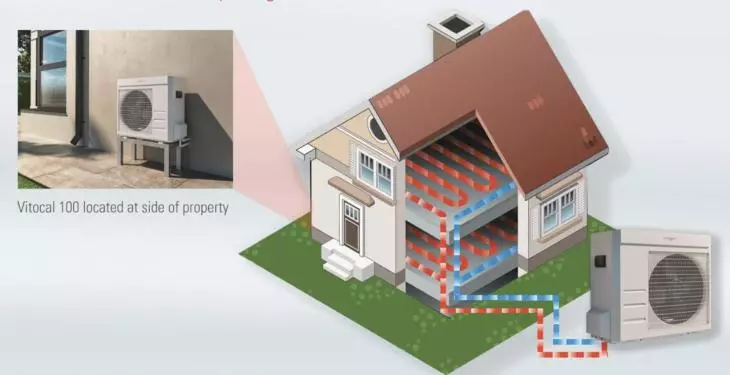Updated: 22nd July, 2025

Try a new boiler quote, save up to £340 per year (0% APR available).
What happens when your boiler pressure goes too high, some possible causes and how to fix it.
Boiler pressure is something many homeowners do not think about until there is a problem. Too much pressure can cause the heating system to work less efficiently, shut down, or even lead to leaks and damage. High boiler pressure should not be ignored, as it might cause expensive repairs and even safety risks.
Most boilers have a pressure gauge that makes it easy to check if there is an issue. It is important to know what the correct pressure should be and why it sometimes rises above normal. Simple steps can help bring the pressure back down and keep the whole system running smoothly.
Boiler pressure is measured in bars. Most domestic boilers have a pressure gauge on the front or underneath the panel. It is important to check this reading regularly.
Ideal Pressure Ranges:
Boiler State | Ideal Pressure (Bar) |
|---|---|
Heating OFF (cold) | 1.0 – 1.5 |
Heating ON (hot) | 1.5 – 2.0 |
When the boiler is cold, the pressure should be between 1.0 and 1.5 bar. This is when the system is not running and water is not being heated.
Once the heating is on and water starts circulating, the pressure usually rises. It should stay between 1.5 and 2.0 bar while hot. If it goes above 2.5 bar, this is too high and can point to a problem.
Low boiler pressure, under 1.0 bar, may keep the heating from working properly. High pressure, above 2.5 bar, can put stress on pipes and valves.
Quick Checklist:
Check the gauge regularly
Keep pressure between 1 – 2 bar
If pressure is too high or low, take action or call a professional
If you notice the needle is in the red zone, your boiler needs attention. Always let the boiler cool before checking or adjusting the pressure. Regular checks can help avoid future breakdowns.
Reading a boiler’s pressure is simple, but knowing what the numbers mean is important. Most boilers have a pressure gauge on the front. This gauge usually looks like a small clock with a needle.
When looking at the gauge, check whether the boiler is on or off. The correct pressure is usually between 1.0 and 1.5 bar when the heating is off. If the pressure rises above 2.5 bar, it is considered too high.
Many pressure gauges have colour zones:
Green area: Normal pressure (about 1.0 to 1.5 bar)
Red area: High or low pressure (above 2.5 bar or below 1.0 bar)
Below is a simple table showing what the readings might mean:
Pressure (Bar) | Status |
|---|---|
Below 1.0 | Too Low |
1.0 – 1.5 | Normal (off) |
1.5 – 2.0 | Normal (on) |
Over 2.5 | Too High |
Some modern boilers have digital displays instead of dials. They will still show the pressure, often in the same units.
If the pressure gauge needle is in the red zone or above the recommended number, the boiler may need attention.
Always refer to the boiler’s manual, as some models may have slightly different ranges. It is important to check the pressure regularly to help keep the boiler running safely.
Boiler pressure can rise for several reasons. One of the most common causes is adding too much water when topping up the system. If the boiler has recently been repressurised, it's easy to accidentally go over the recommended level.
A faulty or damaged expansion vessel may also be to blame. The expansion vessel helps manage pressure changes as the water heats up and cools down. If there is too little air inside, the pressure can increase quickly.
Blocked or stuck pressure relief valves are another possible cause. These valves are designed to protect the system by letting out extra pressure. If they are not working, excess pressure can build up.
Other issues may include:
Faulty pressure gauges giving false readings
Leaks in the system
Faulty filling loops not closing fully
Table: Common Causes of High Boiler Pressure
Cause | Possible Effect |
|---|---|
Overfilling the system | Pressure too high |
Faulty expansion vessel | Pressure fluctuations |
Blocked relief valves | No release of excess pressure |
Leaking system | Pressure inconsistent |
Faulty filling loop | Unintentional overfilling |
Pressure that is too high can lead to water escaping from safety valves. It's important not to attempt repairs without proper knowledge, as boilers can be dangerous. If basic checks do not help, a professional should inspect the system.
When boiler pressure rises too much, several problems can start to appear. The system is designed to work within a set pressure range, usually between 1 and 2 bar. If it goes above this, it can become unreliable.
Common signs of high pressure include banging noises, vibrations, or even water leaking from the pressure relief valve. The boiler may also turn itself off to avoid any damage.
Possible effects of high boiler pressure:
Heating system may stop working
Leaking water from safety pipes
Strange noises or vibrations
Warning lights on the boiler display
Many modern boilers have a safety device called a Pressure Relief Valve (PRV). If the pressure gets too high, the PRV lets out extra water to bring the pressure down. This is a safety feature to help prevent parts from breaking.
Prolonged high pressure can lead to increased wear and tear. Sometimes, this can damage internal components or, in rare cases, cause part of the boiler to fail. While most boilers will shut down before things get worse, it is still important to deal with high pressure to stop bigger issues.
Here's a quick look at what can happen:
Pressure Level | Possible Outcome |
|---|---|
1 – 2 bar | Normal operation |
2 – 2.75 bar | High pressure—watch for leaks |
Above 2.75 bar | Safety risk—boiler may shut down |
If a boiler’s pressure is too high, it may stop working safely. Lowering the pressure is often straightforward if the right steps are followed.
Step-by-step methods to reduce boiler pressure:
1. Bleed the radiators
Bleeding radiators is the most common way to release excess pressure.
Turn the boiler off and let it cool.
Use a radiator key to slowly open the bleed valve.
Hold a cloth under the valve to catch drips.
This lets out air and a small amount of water, reducing system pressure.
2. Use a drain-off valve
Some heating systems include a drain-off valve at the lowest point.
Place a bucket under the valve.
Open the valve slowly and allow some water to drain out.
Monitor the boiler’s pressure gauge.
Stop draining when the pressure is within the recommended range (usually 1 to 1.5 bar).
3. Check and tighten valves
If filling loop valves are left open or leaking, pressure can remain high.
Make sure both ends of the filling loop are closed tightly.
If any valve seems faulty, have it replaced.
Boiler pressure guidelines table
Situation | Action Needed |
|---|---|
Pressure above 2 bar | Bleed radiators or drain |
Water leaks found | Check/tighten valves |
Pressure normal (1-1.5) | No action needed |
Always wait for the boiler to cool before releasing pressure. If unsure, contact a Gas Safe registered engineer.
Get a quote in 60 seconds, fitted as fast as next day!
0% APR finance available.
When the heating is on, boiler pressure should rise slightly. A normal range is between 1.5 and 2 bars. If the pressure goes above 2.5 bars, it is usually considered too high. This can be caused by overfilling, a faulty part, or trapped air in the system. Some boilers may show this area in red on the gauge.
If boiler pressure gets too high, the system may release water through a pressure relief valve. Some modern boilers can shut down automatically to prevent any damage. Leaks from pipework or radiators may start to appear if the pressure stays above a safe level.
Too much pressure can strain the internal parts of the boiler. Gurgling or banging noises might happen, and seals could fail. Over time, this stress could damage the boiler and reduce its lifespan.
Turn off the boiler and allow it to cool before taking action. Bleeding a radiator can release excess pressure inside the system. Another way is to use a drain-off valve if available. If these steps do not solve the problem, or if high pressure returns quickly, contact a qualified engineer.
Pressure is too high if it goes above 2.5 bars while the system is hot or above 2 bars when cold. Prolonged high pressure can lead to leaks or other damage. Most manufacturers indicate the safe range on the pressure gauge with a green zone.
For a Vaillant boiler with high pressure, first, make sure the filling loop is closed. Bleed a radiator to let out water until the indicator returns to around 1.5 bars. If high pressure remains or keeps coming back, it could be a faulty expansion vessel or another part that needs attention from a Gas Safe engineer.


24th July, 2025
A new combi boiler offers instant hot water on demand. This means users do not have to wai...
 Read Article
Read Article

22nd July, 2025
What happens when your boiler pressure goes too high, some possible causes and how to fix...
 Read Article
Read Article

22nd July, 2025
As the UK moves toward a low-carbon future, switching from traditional gas boilers is beco...
 Read Article
Read Article